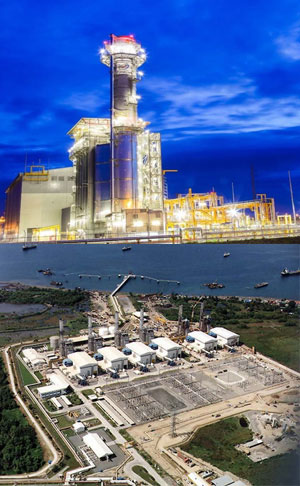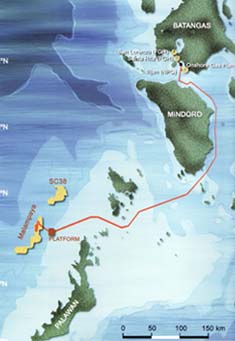The Malampaya Deepwater Gas-to-Power project utilizes state-of-the-art technology to extract natural gas and condensate from the depths of the Palawan basin. It then processes the gas in a nearby shallow water production platform and transports it across three provinces through a 504-km (313-mile) underwater pipeline. An onshore gas plant in Batangas receives the gas for further processing, before it is sent to five power-plant customers.
 THE CUSTOMERS
THE CUSTOMERS
Power Stations:
Four combined-cycle gas turbine plants and one open cycle power station are supplied with processed natural gas namely Sta. Rita power station (1,000 MW); San Lorenzo power station (500 MW); San Gabriel power station (414 MW); and Avion power station (97 MW) to generate over 2,011 megawatts of power for Luzon.
WHAT IS NATURAL GAS?
Dubbed as the best fuel complement to intermittent renewable energy, natural gas is composed of hydrocarbons found deep underground, or extracted through driven wells. It is formed beneath the earth’s surface over millions of years by the decomposition of organic matter, in much the same way that oil and coal are formed. Natural gas is 85-90% methane, with varying amounts of ethane, propane, butane, and other hydrocarbon compounds. Some condensate and oil will always be associated with the gas. In its natural state, the gas is colorless, odorless, and lighter than air.





